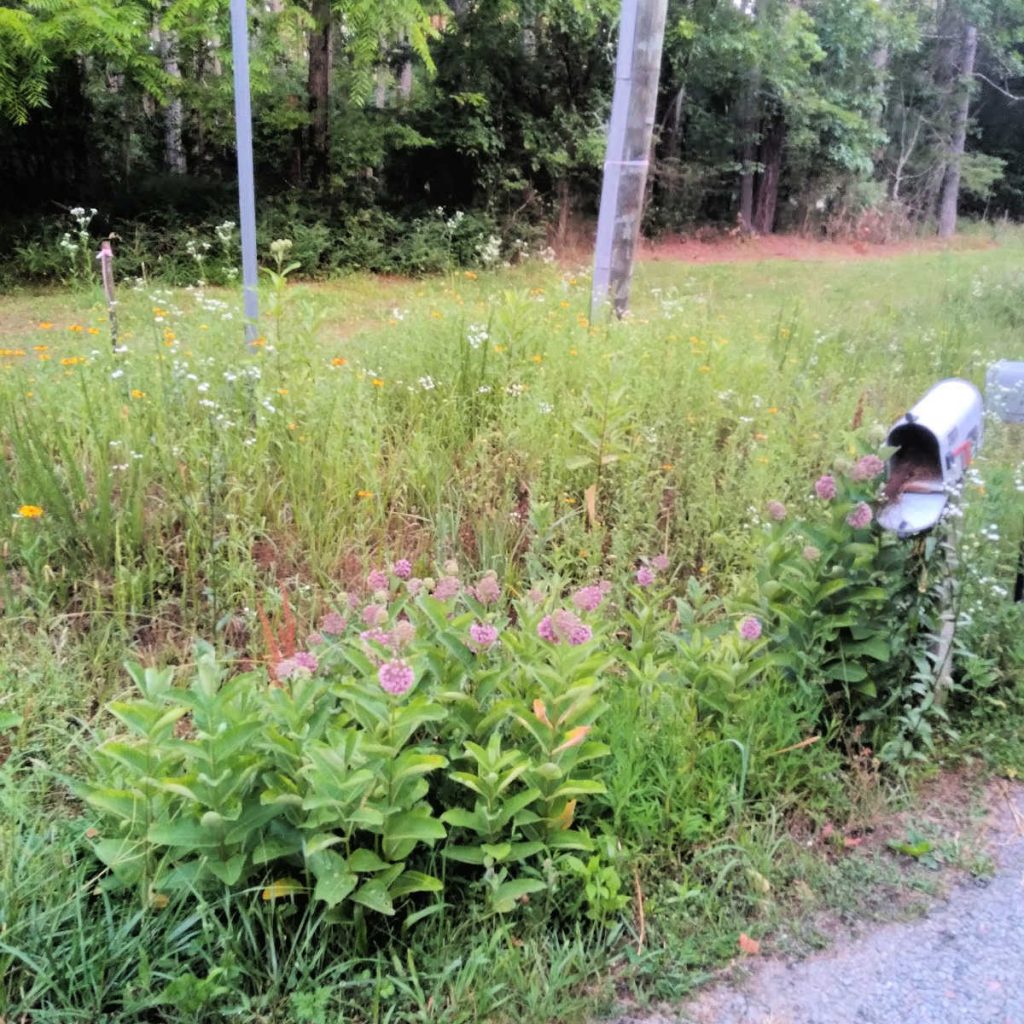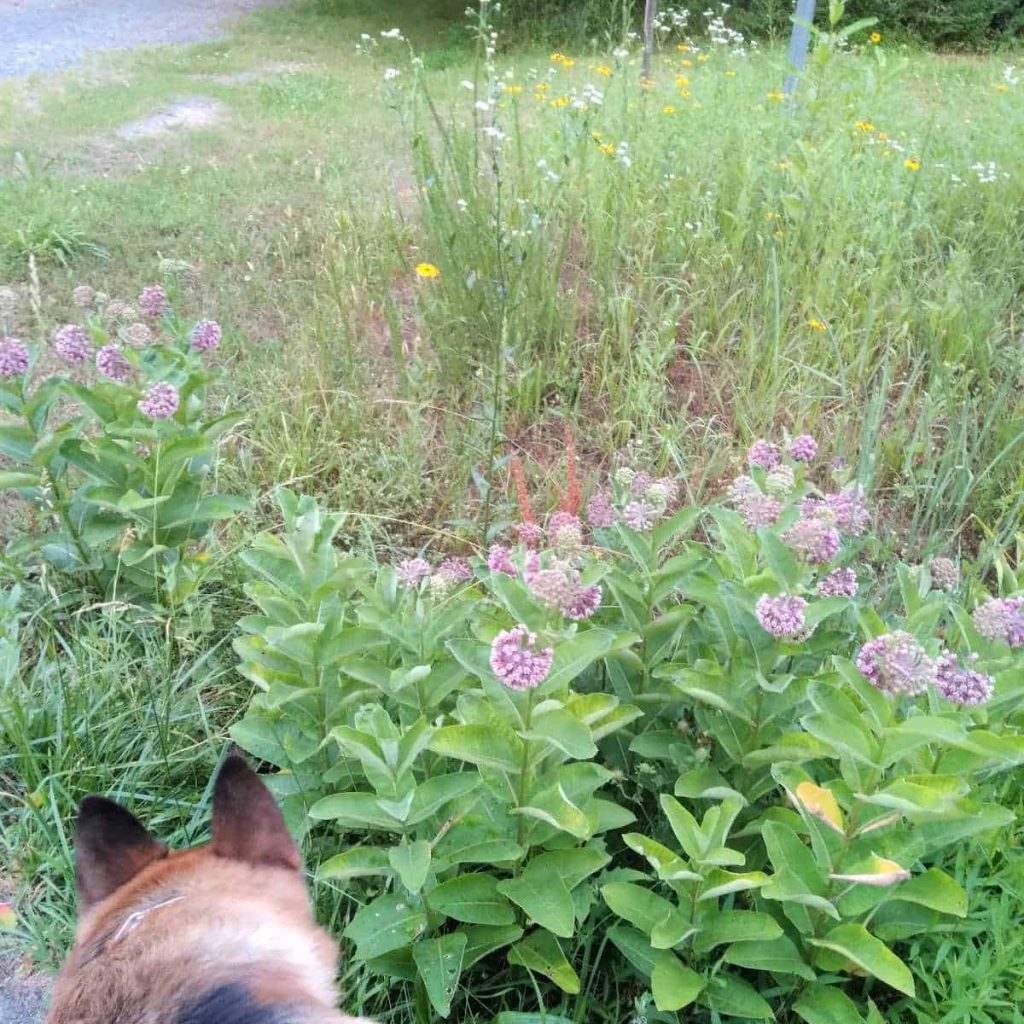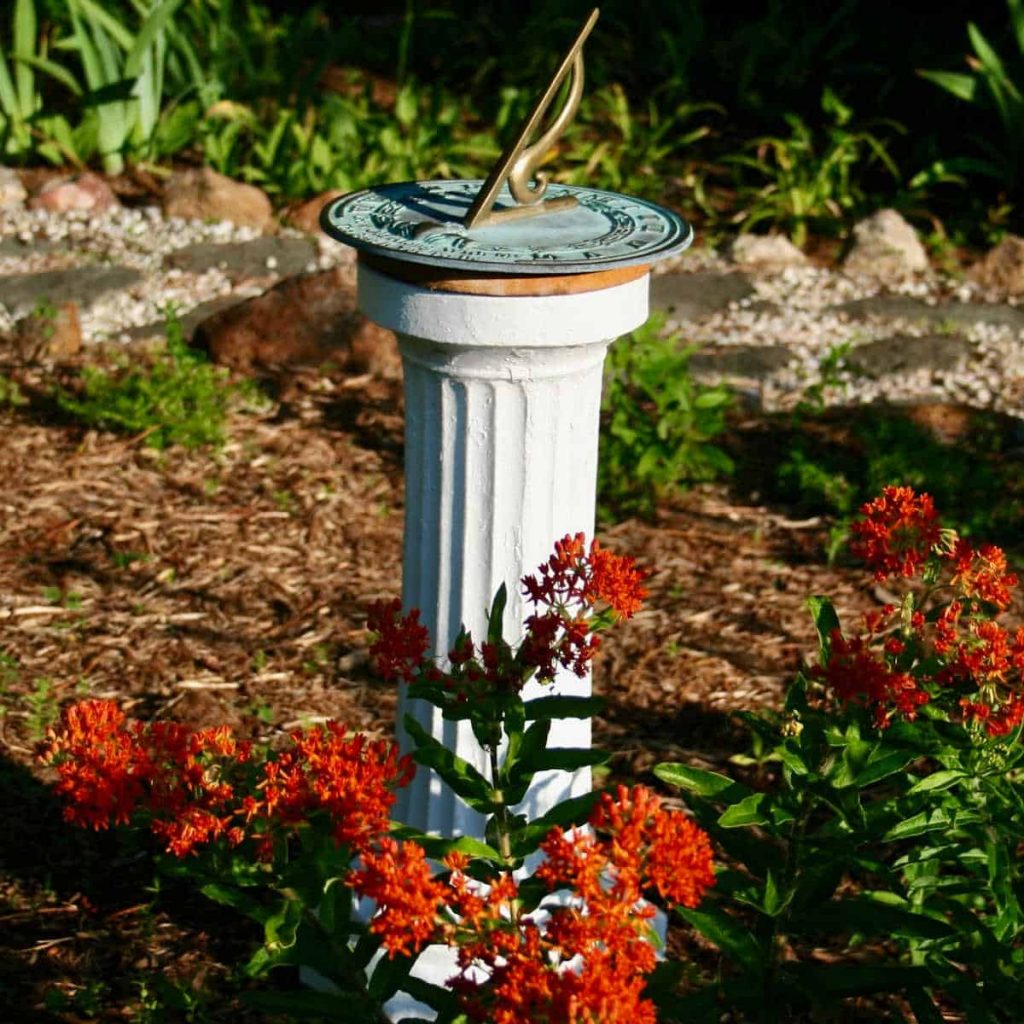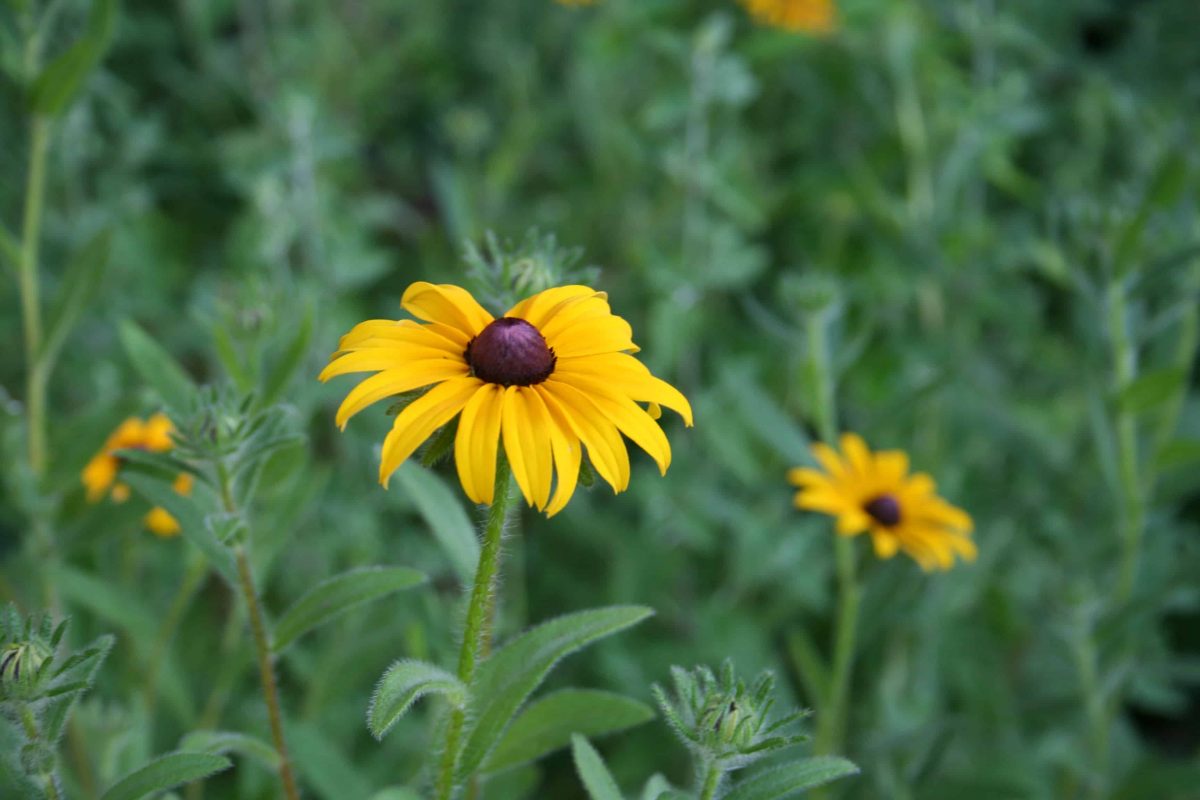I’ve noticed this little street corner on my dog walking route where wildflowers for pollinators are abundant. When the county mows the grass along the road edges, the mower politely moves around this corner. The wildflowers are abundant, attracting butterflies, pollinators, and insects of all types.
And, whoever planted this corner for pollinators also loves birds, because that corner mailbox? It’s twisted to the side and always open to welcome “the Byrds” who built a nest inside!

The little native pollinator garden on a corner by my house. So many plants here that butterflies and native pollinators love – plus the mailbox just for the birds!

My dog and I walk by this corner filled with wildflowers every morning. I love seeing the changing flowers with each season. This morning the milkweed bloomed.
Let’s take a closer look at the wildflowers for pollinators found there as well as native plants for butterflies, and how you can add them to your garden, too.
Why Plant Wildflowers for Pollinators?
Pollinators are any insects that pollinate, or fertilize, plants. Nationwide (in the U.S.), pollinators are needed for 80% of our food crops. (Wind can also act as a pollinator – for example, tomatoes are wind-pollinated when the wind shakes pollen from pistil to stamen to create the tomato).
Most people think of bees when they hear the word pollinator, and they wouldn’t be wrong. But the word “bee” encompasses a huge category of flying insects. Some bees are imported for honey production such as Italian and Russian honeybees. However, it is the native bees – the ones endemic to the area – that are of extreme importance to the local ecology.
Virginia’s Native and Solitary Bees
In Virginia (where I live), the Department of Conservation and Recreation lists 477 species of bees found in the state. Approximately 19 species are not native to Virginia but likely escaped from imported bees. You can see the complete list of Virginia Native and Solitary Bees here.
The diversity of pollinators is astonishing. Each one plays its part in the local ecosystem, pollinating trees, shrubs, flowers, fruit and vegetables. The intricate way in which bees of all types – solitary, hive-based, and others – play a part in the lifecycle of plants and by extension producing food for all types of animal lie is astonishing.
Wildflowers for Butterflies, Too
The little corner my dog and I walk past every morning is planted with many species of plants that support both bees and butterflies.
- Milkweed
- Ox-eye daisy
- Butterfly weed
- Black-eyed Susan
- Clover
- Thistle
And in the fall, goldenrod and asters abound.
It’s a glorious group of plants for both bees and butterflies.

My own butterfly garden includes plenty of butterfly weed – the orange flowers here. They also grow wild in meadows here in Virginia.

Black eyed Susan growing wild at the edges of my lawn where it turns into woodland.
How to Plant Wildflowers for Pollinators
There are many excellent reasons to plant wildflowers for pollinators. Nationwide, between colony collapse disease and the loss of native habitats to construction and the encroachment of cities on formerly wild areas, pollinators are losing habitat at a swift rate. These areas cannot be quickly or easily reclaimed and in some cases may never be reclaimed as highways, skyscrapers, and housing developments are erected on formerly wild areas.
However, every little bit helps the bee and butterflies and other wild creatures! Like the kind-hearted person who planted this corner, planting a small corner of your yard can provide an oasis in a cityscape for pollinators.
How to Build a Pollinator Habitat
Like all living things, pollinators need:
- Food – plants that provide food for adults (nectar or pollen) and young (leaves for larvae or caterpillars, for example)
- Water
- Shelter
Pollinator habitats should rely heavily on native plants. These are plants best-suited to the local ecosystem which evolved alongside the pollinators and provide their sustenance. Each state may have its own unique varieties of common native plants; for example, in Virginia, there are several varieties of milkweed, each supporting monarch butterflies but slightly different.
To create your own little pollinator habitat, you will need a sunny location. Yes, you can grow native plants in shade, and that may be your only option depending on your yard, but sunlight or partial sunlight will enable you to grow a lush little meadow garden like the one I see on the street corner every day.
Soil amendments are minimal. You will need to dig up any sod or lawn for the area and rake the soil to break up large clumps. Starting from seeds is easy, and many companies, including American Meadows sells wildflower seed packages that are easy to grow and contain a great mix of plants.
If you start from plants, check the label at the nursery, or work with a chapter of your local Native Plant society to ensure you are purchasing true natives raised without taking them from the local ecosystem.
No Insecticides!
One way to truly help pollinators is to avoid using insecticides. For some, this may be a big challenge. I grew up with a dad who sprayed everything – and I mean everything – with insecticides. Malithion, diazinon, you name it, he used it. I shudder to think about it now but this is what he learned back in the mid-20th century when he learned to garden.
Now, of course, we know that these chemicals and other insecticides used in lawn and garden care are harmful to all insects, not just the targeted pests that are chomping on your precious roses or tomatoes or whatever. That means that spraying an insecticide to kill white flies may also kill native bees.
Avoid using insecticides at all costs. My own garden is completely insecticide free including our fruit trees. We raise an enormous apple crop each year without spraying a single plant. It can be done. Keys to organic growing include companion planting, enriched soils that make plants strong and healthy, hand removing some insects (such as squash beetles and Colorado potato beetle), and, when necessary, accepting the simple fact that your crops won’t be as perfect as those found in the stores.
Your fruits and veggies may be ugly, but at least you aren’t hurting native pollinators – and potentially the local ecosystem, too.
Resources for Planting Wildflowers for Pollinators
I’m going to list several resources for those interested in planting for pollinators. We are an Amazon affiliate which means that Home Garden Joy makes a small commission with each purchase from Amazon.
US Native Wildflower Seed Ball Kit. (EasternUS)
American Meadows Wildflower Seed Packets Wildflower Party Favors for All Occasions




